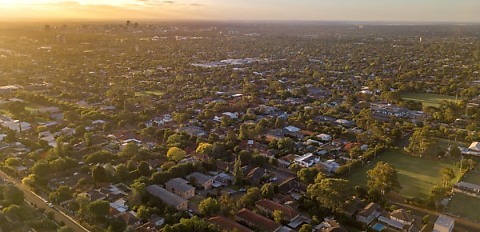According to the property platform, this negative change is part of a larger cooling market that has been induced by a myriad of reasons, including higher inflation and interest rates.
The impact of this combination resulted in the combined value of Australian residential real estate falling from $9.95 trillion in June to $9.8 trillion at July’s conclusion.
Nationally, housing values decreased by 2 per cent over the three months to July, led by value drops of 4.7 per cent and 3.2 per cent in Sydney and Melbourne respectively.
Values also descended in Hobart (-1.3 per cent) and Canberra (-0.9 per cent).
Adelaide reported the highest increases of a capital city, with values lifting by 3.6 per cent throughout the quarter.
This was followed by Darwin (1.9 per cent), Perth (1.2 per cent) and Brisbane (0.1 per cent).
An outlook of national regional markets depicts falling values in regional NSW (-0.8 per cent) and Victoria (-0.5 per cent), whereas prices went the opposite direction in regional Queensland (up 0.1 per cent), Western Australia (0.9 per cent), Tasmania (0.4 per cent), Northern Territory (2.8 per cent) and South Australia (4.2 per cent).
All the combined capitals reported a positive change in dwelling values in the 12 months to July 2022, with growth ranging from 30 bps in Melbourne, to 24.1 per cent in Adelaide.
CoreLogic has expressed that, in the year to July, Australia’s dwelling values increased by 8 per cent, with capitals collectively lifting by an average of 5.4 per cent.
CoreLogic previously reported that, in the year to December 2021, this growth rate was reported to be 22.1 per cent and 21 per cent respectively.
Similar activity was recorded in the national regional markets, with each state experiencing value growth during this 12-month period.
These increases ranged from 6.4 per cent in regional NT to 22.5 per cent in regional South Australia, reaching a combined total of 17 per cent.
In December 2021, this annual increase was 25.9 per cent, according to CoreLogic.
The property analysis outfit also reported that sales volumes were beginning to ease from their recent peaks, with the research body estimating there were a “reasonably steady” 581,138 sales in the year leading up to July 2022.
However, when compared to the figures recorded during the same three-month period in 2021, sales estimates are down 16 per cent.
The biggest drop in volume has occurred in Sydney, with a decline of 13.5 per cent in the 12 months to July 2022.
In addition to the NSW capital, sales volumes have fallen in Hobart and the national capital Canberra, while they have risen in every other capital city.
Regionally, only NSW, Victoria and Tasmania recorded a sales volume decrease in this period.
CoreLogic data released last week also reported that, during July, clearance rates across Australia’s capitals reached their lowest figure in more than two years.
[Related: Refinancing surges by 29% across east coast during FY22

